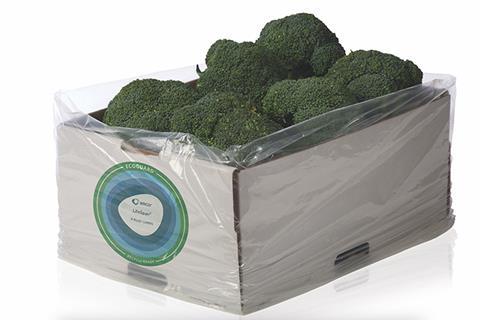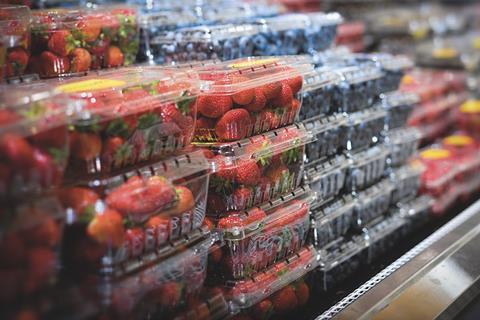Nancy Nicholas, senior development engineer and food scientist for Amcor, looks at the key challenges facing the fresh produce packaging business and champions its contribution to a sustainable future

What are the major forces driving changes in fresh produce packaging, and what impact are they having on the way the business operates?
Nancy Nicholas: The way that people purchase, consume and eventually dispose of fresh produce has completely changed in recent years. Consumers have become more aware and engaged around all aspects of sustainability; from environmental impact to farming methods and supply chains.
As a result, people are paying more attention to what products they put in their shopping trolley and how these decisions are impacting the environment. Research by Kerry Global shows that 98 per cent of consumers are trying to reduce food waste – with cost savings and sustainability cited as the primary incentives.
While it is often overlooked as a key driver for sustainable change, product packaging plays a pivotal role. Packaging solutions ensure the quality and freshness of produce and help to reduce food waste in the long term. Packaging also dictates how products are eventually disposed of and contribute to brands’ investment in the circular economy through recycle-ready design and the inclusion of post-consumer recycled content.
With new and unexpected challenges in the fresh produce industry including extreme weather events, rising inflation and disrupted logistics, the need for resilient packaging has only become more important.
How will incoming packaging regulations impact the fresh produce sector, and how will these be felt by brands and retailers further down the supply chain?
NN: As well as increased consumer awareness, changes at a regulatory level across the EU and UK are also driving a fundamental shift towards more sustainable fresh produce packaging. Regulations such as the EU’s Packaging and Packaging Waste Regulation (PPWR) will accelerate the adoption of recycle-ready packaging and set an industry-wide mandate for the inclusion of recycled content by 2030. Meanwhile, in the UK the industry is calling for government action on the removal of primary packaging for 21 selected uncut fruits and vegetables.
It is safe to say that changes to the fresh produce market are being felt at all levels; from the EU parliament to supermarket shelves. But how is the industry responding to these changes, and how are packaging providers keeping pace with more sustainable solutions for fresh fruit and vegetables?

On the shop floor, consumers may notice a reduction in primary plastic packaging and a rise in unpackaged or minimally packaged fresh produce. For produce that requires packaging, brands and retailers are having to reconsider the packaging materials they use and how this may be contributing to food waste. A recent example from Amcor – using smart packaging solutions, such as Amcor’s P-Plus Liners for cherries – resulted in a 2.3 per cent reduction in waste level.
This is where forward-thinking packaging can really make a difference. Leaders in packaging technology are now developing solutions that are tailored specifically to the needs of fresh produce – balancing precise levels of hydration, oxygen and carbon dioxide to allow for controlled ripening after harvest, while maximising freshness. Amcor’s P-Plus Liners is one example where advanced packaging technology has been used to help enhance produce shelf-life, reduce dehydration and maintain quality throughout the supply chain.
By helping to extend the storage life of produce up to four times longer than conventional packaging methods, Amcor’s P-Plus Liners demonstrate how recent innovations in perforation technology allow producers to modify the atmosphere inside the pack.
What makes packaging for fresh produce particularly challenging to make more sustainable?
NN: Packaging for fresh produce is a particularly fascinating and highly technical sector. Given how sensitive fresh produce is to external conditions, respiration rates can vary depending on the type of produce, the product’s origin and the season. Designing packaging that maintains product quality across these variables requires a deep scientific understanding and adaptability.
One particular area of innovation that excites me as a food scientist is the interaction between packaging and specific types of produce – and how industry leaders such as Amcor are tailoring the very makeup of packaging to the specific respiration rate of the product. For example, some products, such as melons, need to release a controlled amount of moisture, whereas others, such as herbs, require packaging that minimises and prevents moisture loss.
Does packaging have a role to play in reducing food waste?
NN: Taking a more granular look at the shelf-life of fresh produce, it becomes clear that packaging absolutely plays a vital role in reducing food waste. Food waste is an urgent and shared priority at every level – from consumers who are trying to cut down on weekly food shop costs to larger businesses aiming to reach sustainability commitments. At the end of the day, reducing waste improves commercial profits and brand reputation.
When it comes to smart packaging, the long-term return on investment is clear. In Amcor’s cherry case study, which I mentioned previously, we compared P-Plus liners to no film. The results showed that P-Plus liners extended shelf-life by up to nine days and offered potential savings of £37,380 on an order of 25,000 liners. These benefits accumulate over time to make a significant difference, particularly for such a simple and strategic change.
What do you think the packaging market for fresh produce is currently missing? What challenges does the sector face that still need addressing?
NN: Although the pace of innovation towards a more circular and sustainable industry is promising, what brands and retailers are really struggling with is consistency. Different regulations are being introduced across regions, which means that packaging mandates and requirements are specific to different product types and countries. This, in turn, makes compliance much more complex.
Global brands are also having to tackle the question of scalability, as they must consider different solutions to comply with inconsistent regulations across regions. To respond to these challenges, Amcor is focused on creating solutions that stay ahead of regulations and are adaptable to emerging needs in the market. However, ultimately, a more unified approach – one possibly accelerated by regulations such as PPWR – is needed to unlock greater sustainability across the board.

Where do you see opportunities for fresh produce packaging to develop in the future? What is the outlook for more sustainable packaging in the sector?
NN: There is huge potential in smart, adaptable packaging that extends the shelf-life of fresh produce and reduces waste. As regulations push for more sustainable solutions and consumers demand transparency, there is an opportunity for packaging to become not just a means for protection but also for communication, product optimisation and sustainability progress.
Amcor’s P-Plus Liners solution is the result of over 30 years of dedicated research and development. Amcor’s team of technicians, engineers and scientists have gathered insights from across the globe, studying respiration rates and the post-harvest behaviours of various fruits and vegetables. The key to innovation lies in matching perforation patterns of the material to specific fruit and vegetables and supply chain conditions. While the base material of Amcor’s P-Plus Liners hasn’t changed, the micro perforation has evolved.
In this way, true progress lies in adaptability rather than a one-size-fits-all approach. This science-driven process provides insight into the future of packaging; one that is engineered for cost-effectiveness, sustainability and product quality from the ground up.



